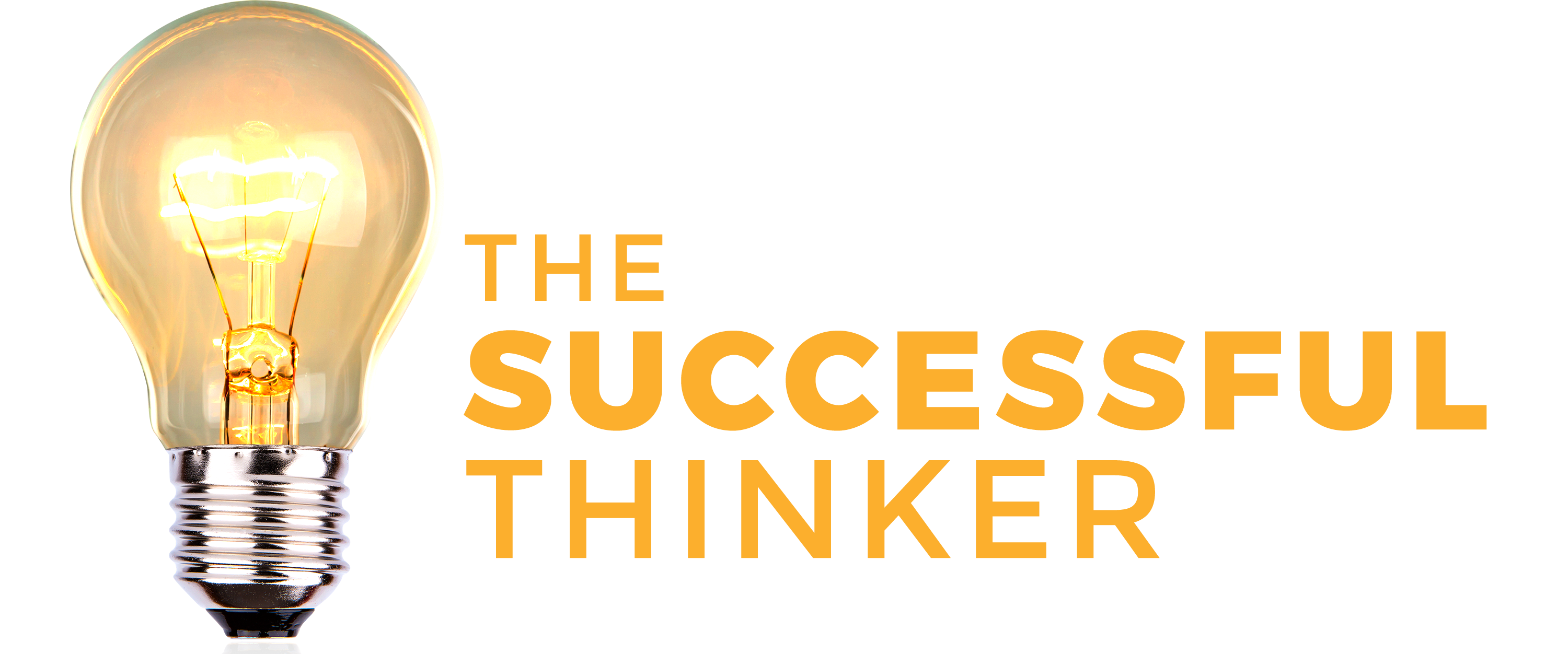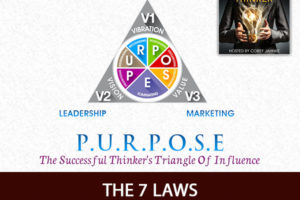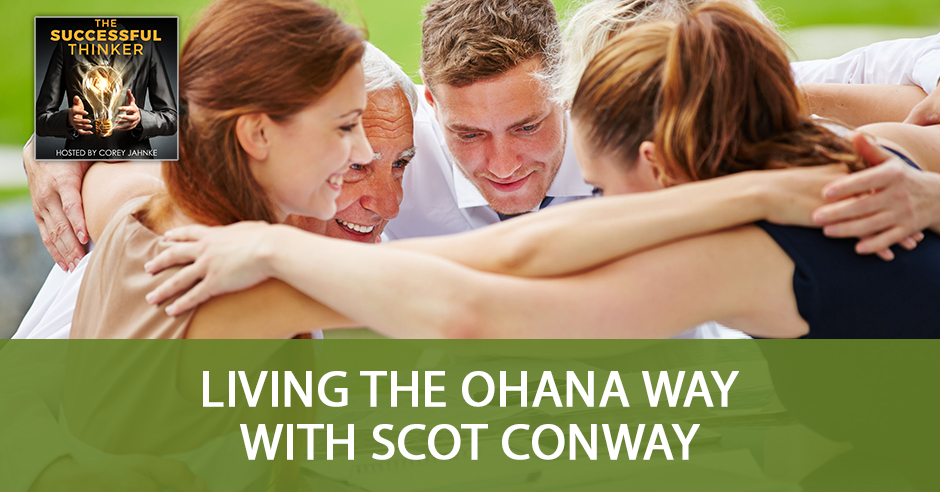
More than just heading a group of people, being a leader means being the head of the family. It is treating people as whole persons, like how you treat family members. Host Corey Jahnke and Scot Conway explore what it really means to treat people as whole persons interested in creating heart to heart connections and finding common ground as we journey through life. Scot shares the principles of oasis, harmony, assertiveness, nobility, and aloha in a way that makes you not only want to become a better leader, but a better person overall. By showing up as our best selves, we create a safe harbor for others to live, love, and create their highest contributions willingly and in meaningful ways. Scot has 30 years of experience in conflict resolution and problem-solving. What he brings to the show is nothing short of amazing wisdom and insight.
—
Listen to the podcast here:
Living The Ohana Way with Scot Conway
How Successful Thinkers Can Improve Their Leadership With A Family Centered Approach
I’m excited because we have somebody who I consider a tremendously Successful Thinker because this person does something that most people don’t do. He approaches life from, “I have a point and you may have a point and our points, although they may at the outset seem competing they may come to the same outcome, especially if we work together.” This guy’s on vacation and he had a car crashed into his business. He’s totally out of town, car crashes into his business and his clients took care of it for him. He calls that Ohana and that’s something he works hard to create on purpose.
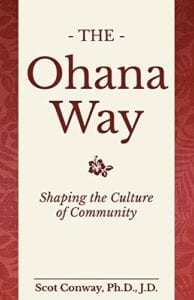
The Ohana Way Book: Shaping the Culture of Community
He says his résumé is not all that important. What he teaches you is important but I want you to know what he’s done. This man has written 30 books, produced 30 audio programs. He’s a speaker. He’s a trainer. He’s a lawyer, a real estate broker and a PhD. According to IMDB, he’s been in a movie with George Clooney. He’s a master of martial arts. He’s been training since 1971. He’s been in magazines. He’s taught at world conferences. What matters most to him is that people are helped to live elevated, vivid lives as whole people living whole lives. The Ohana Way is the name of his book and his name is Scot Conway. Scot, welcome to the program.
I am thrilled to be here. It’s so exciting to be able to join you and be able to answer any questions and share with your audience. Thank you for having me.
You’re welcome and I want you to feel at home here at the Successful Thinker. I’m excited to hear a little more about that car crash. What happened and why didn’t you even need to come home?
I’ll give you the short version of the car crash. I’m in Las Vegas. I originally went there for a convention. I hung out to see some friends. I’m off on a date and I’m walking back to my car afterwards. I’ve looked at my phone for the first time for the evening and one of the San Diego people has tried thirteen different ways to get ahold of me. Rather than read all the things or listen to a message, I just called him back to ask him what’s up? He says that there is a car inside the business. It completely destroyed the storefront and he sent me a picture. I’m looking at the picture thinking, “How in the world did that happen?” because I had my storefront and there’s a walkway in front of the storefront. Then there’s a parking lot. There’s this barrier between the parking lot and the street that has grass and trees and there’s a sidewalk and then there’s the street. How in the world does this happen? He was going to hang out and take care of it.
I made one phone call to one person who lived up the street that I could authorize to take care of things for me. Before I know it, I hear that I’ve got four people on site, one person volunteers to stay the night. Another group agrees to show up in the morning to relieve the other person so they can get to work in the morning. Suddenly I have an entire crew cleaning the place up for me. I found out that all it took was some of them saw it posted on social media. They descended on the place because they knew I was out of town. I was told very specifically, “You stay on vacation. We’ve got this.”
One person went so far as to say, “Don’t you dare come home. We will be offended if you come home. We’ve got this. You stay there and you have a good time.” In Las Vegas, I was meeting with some business owners and they were like, “We saw what happened. We totally understand you have to cancel. Have a good drive home.” I said, “No, we’re still on for lunch.” They were like, “Didn’t a car crash into your place?” I said, “Yeah, it’s okay. My clients got it.” They said, “Your employees have it.” I was like, “No, my clients have it. I don’t have any employees there.” That was a manifestation of Ohana. That’s what brought it to attention and it was in the news and it was pretty cool. It really was.
When you say that’s a manifestation of Ohana, could you please outline for me what Ohana stands for and how your program came about?
Ohana is a Hawaiian word that means family. Have you seen Lilo & Stitch, Disney 2002? It’s an old movie. A lot of us have seen it, where they say, “Ohana means family. Family means no one gets left behind or forgotten.” That’s because ohana is an actual Hawaiian term. If you go to Hawaii and you asked them, “What’s ohana?” They’ll tell you, “It’s family.” We also use it as an acronym for oasis, harmony, assertiveness, nobility and aloha. Aloha is another Hawaiian word. They use it for hello and goodbye and it means love. They’ll talk a lot about the Aloha spirit, a loving spirit.
Lilo & Stitch is one of my favorite Disney movies and Stitch is probably my favorite Disney character. One of my favorite times was the Ohana restaurant in the Walt Disney World Resort. How did you go about developing this program?
It’s funny how it began because I’m a martial arts instructor. I’ve been training in martial arts since 1971. I’ve got three decades-plus of teaching and I would always teach this culture to my students. The culture basically is Ohana. You treat each other like family. We’re part of the guardian family and we treat each other with the Aloha spirit. We come to each other with love. This is a safe place. It’s an oasis and that developed into that acronym of oasis, harmony, assertiveness, nobility and Aloha. It began like here’s a little one sheet of paper that describes what we’re doing. Then it turned into a report that was ten pages, single-spaced on 8.5 x 11, which was eventually turned into a small book. That evolved into a much larger book, The Ohana Way, then that turned into an entire program by itself.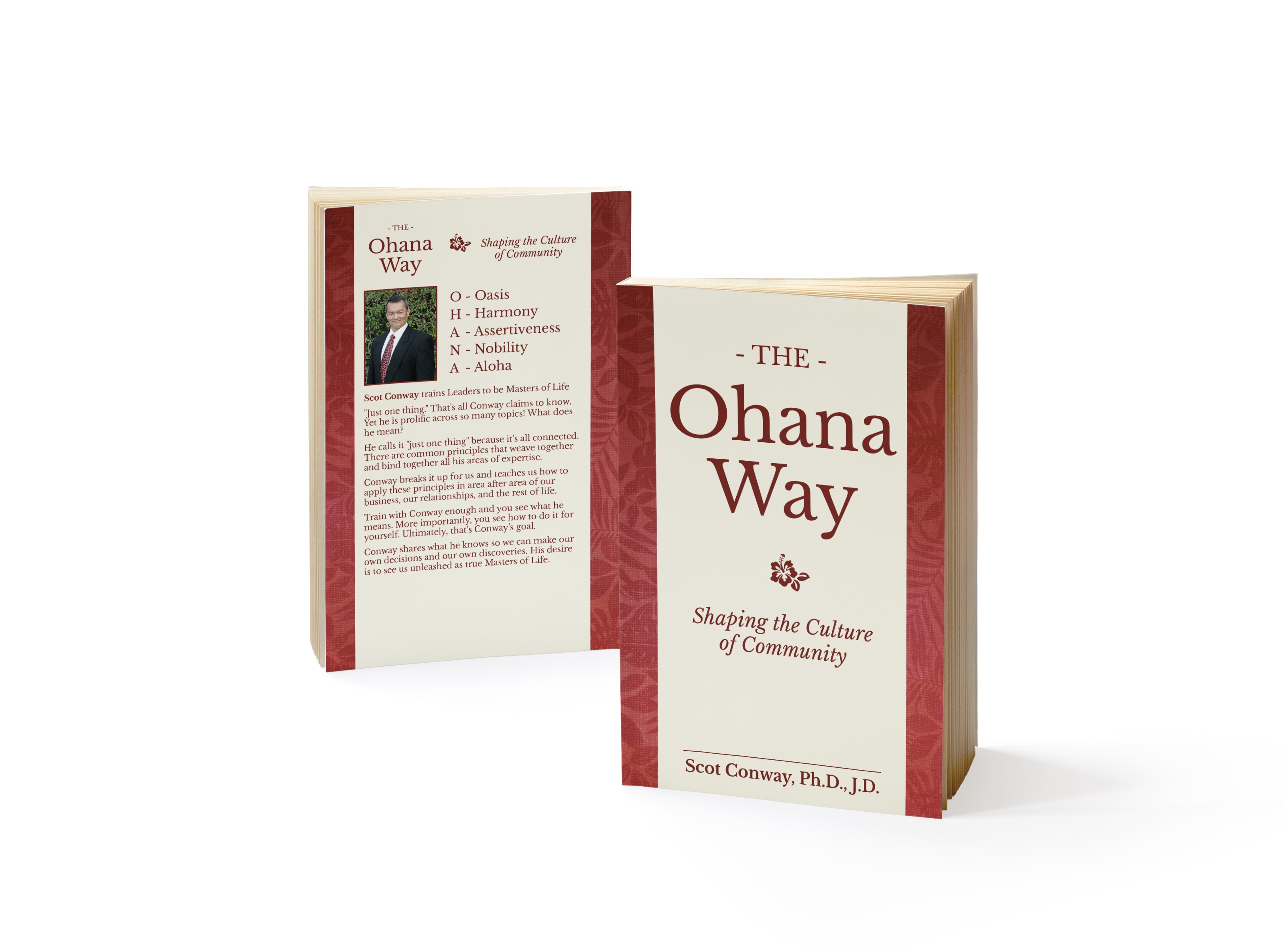
You’ve been working on this for how long?
In one way or another, I’ve been doing this for over 30 years.
The car crash was pretty impressive because you’re out of town, your clients take care of that for you. Can you give me maybe another example of how the Ohana works in your life and maybe in your work?
This one is cool because hopefully none of us will have car crashes into our businesses or our homes or anything. A very simple and mundane thing is I was at an event. I had taught on Ohana and we had a small group that was doing Ohana. One of the participants would normally try to figure out a way to get to a store to get some vitamin C because he wasn’t feeling well. We’ve been doing this Ohana thing. I should treat these people a little more like family. He got hold of the host and said, “I’m not feeling very well. I was wondering when you come to pick me up to take me around if you could bring some vitamin C stuff or something.” We do Ohana, the host knows, “Scot’s staying in the same hotel you are, on the same floor I think,” and got ahold of me. I happened to have some vitamin C stuff. I took it down the hall to him. It’s such a simple thing. The other gentleman whose name also happens to be Scot said, “This is pretty cool that I am comfortable enough with the person I know here to say, ‘Let me treat each other like people.’ I’m a person who’s not feeling well and she’s a person who I figured wants to help. Then she knows you well-enough to know that you’re happy to Be Ohana. That’s really cool.”
Then I heard extra feedback later on that they were in a completely unrelated meeting. They have private messages back and forth to one another as they were handling a situation using oasis, harmony, assertiveness, nobility, Aloha, of this private side conversation about, “We’re doing OHANA.” That’s very cool because that made a very simple concrete difference. It’s such a tiny mundane thing that could have been a big deal of calling an Uber, getting a ride to a store somewhere, making a purchase, getting a ride back and just turned into a very simple message by chance, “Could you bring this for me?” Then they sent the message to me and I walked down the hall. It was all resolved whole person to whole person, little gestures like that are huge because it’s the tiny things that you wouldn’t expect to talk about. You wouldn’t expect to ask for it. It’s the accumulation of those tiny things that are at the heart of what the Ohana is.
The thing about life is that we often forget that the small things really are the big things. I appreciate the idea, “I’m a person. You’re a person.” What we talk about a lot in The Successful Thinker is about leadership and leadership means that your employees, people in your organization, people in your family, they are just that, they’re family. No one needs to be left behind. I love the way you put that. Can you walk me through a little bit about how you would go ahead and teach Ohana to a group? Let’s say you were having a seminar. How would you go about teaching that?
When we work together to actively and intentionally solve a situation we would normally have to compromise on, we often find a third solution that neither party originally considered and is the best solution of all! Share on XThere are several ways that I do it. When I do a keynote speech or an intro seminar and I have about 45 to 60 minutes, I’ll literally run through Ohana family, how that works and what that means. I will teach about oasis being a refreshing refuge. Harmony, which the specific definition we’re using is infinite diversity and infinite combinations aimed at greatness. A symphony is a great metaphor for that. Then assertiveness which is moving forward, which means you need to know what your forward is. Purpose, which means you do it intentionally and you have a larger purpose with respect for others. Very often when you have people who are more aggressive and it’s that with respect for others part that’s missing. Then we have nobility. The metaphor there is a royal knight, be our highest and best selves. That has leadership and living by a code.
Then we have Aloha and Aloha is love, which the simple three-part definition that I’ll teach in a short seminar is that means I want the best for you. I want to be the best for you and I want you to have transcendent joy. That’s beyond pleasure. That’s even beyond happiness. I want you to have this big picture of happiness that you can hang onto even in hard times. That’s what love is. If I only have a keynote speech or if I have a one-hour seminar as an intro, I’ll teach my way through each one of those. When I have my full course, my Discover Ohana course that we spend every other week for three months. You get that material week by week, then we get to dive deep and look at the application and all these extra cool things we get to do. What they call a 5×5, which includes principles like, “I have a point. You may also have a point,” and define your win and win-win or no deal and things like that, which would let you dive deep in like, “What does this look like and how do we do it?” We get to discuss applications in our family and applications in that business with our staff, with our clients. That gets to be very powerful and cool.
I was fortunate enough to receive a copy from you of the Ohana Project Journal. As I was going through the questions, I really thought it was interesting how you create questions that force people to self-reflect. Is that a skill that you’ve been working hard at on your own mind and in your own life?
I would say it is a skill that I do. Admittedly it’s not too hard to do these days because I’ve been doing it so long, but when I was a teenager in my twenties it was some effort. Like anything else, when you’ve been doing something a few years, it gets to be an automatic habit. It’s a lot like my martial arts, by the time you get to black belt, you’ve made into habits things that seem so awkward when you try them the very first time. It’s even sometimes almost impossible, then you realize ten years later you’re struggling with stuff now that you thought were impossible before and you’re actually doing all right.
The way I interpret that is Ohana isn’t something that you do. It’s something that you merge with. It is something you become. Is that right?
Yes, and you find yourself doing that. In fact in one of our courses, a dad had explained that he had done something and then remarked as he was reflecting on it with his son. He says, “Before this course, it never even would have occurred to me to do that. I didn’t even do it consciously. I realized now after the fact that I have internalized some of this Ohana in just a few months.” It’s making a difference in his relationship with his son. I thought that was awesome.
That’s one thing that is apparent when I looked through your material. What you’re saying to me is it’s never too late to become an Ohana follower or a Successful Thinker.
You’re never too young. I’ve taught it to kids as young as three. If you have any relationships with any human beings, it’s never too late to make those relationships better by being better Ohana.

Leadership Through Ohana: So many problems could have been cut short if Ohana was practiced to start with.
That’s so important because you and I have each seen people in our lives that have wished that they had gone back and made up with someone before it was too late.
Also, I am an attorney and I’ve worked with business clients. I realized after the fact that maybe if they’d handle the situation a little bit more human being to human being, they wouldn’t be dealing with plaintiff and defendant now.
I suppose that so many problems just mushroom that could have been cut short if Ohana was practiced to start with.
In fact, all of my Ohana type training with a lot of my business plan all started with all you had to do was saying, “I didn’t know that, can you come to teach my people that?” Then I get invited into their business to train their leaders and the staff with principles related to Ohana and dealing with clients all as people. It’s amazing how many problems that solves.
I believe that the key is that your clients, your family, your customers, your employees, your supervisor, at the end of the day, they’re people like you and I, trying to get from 6:00 AM to 10:00 PM without going insane. Scot, if I were to use Ohana to solve let’s say a problem or when obstacles present themselves in my life as they always do, what are your strategies, tactics and techniques for overcoming them? How do you reach the results that you want to get?
When you dive past the basics of Ohana, because there’s Discover Ohana, then there’s Be Ohana, Build Ohana, Bring Ohana to the world. As part of that, the Be Ohana, there’s some emotional mastery techniques in there. I made a public video that originally had material that I would normally use for higher-end clients. I thought it was too important and it’s basically this option thinking. It’s being willing to be flexible and being willing to make changes, but it has to do with how you come at negative realities. Negative emotions are my loving friends. In fact, that’s the title of that video, Negative Emotions, My Loving Friends.
It begins with this idea of Mr. Anxiety shows up in my life and gently taps me on the shoulder. “Scot, something’s coming. Are we ready for that?” If I am, “Cool, just checking.” If I’m not it’s like, “What is that? Maybe I better get ready for that.” Because I had this whisper relationship with my negative emotions that when they show up in my life that they have to tap me on the shoulder, whisper quietly and then I can handle whatever situation they’re telling me about. It lets me adapt to facts of life before they impact me negatively. A fact of life, it’s like a problem, but there’s no solution. It just is and then problems have solutions. By definition, a problem is something with a solution.
Yesterday can’t be a problem because I can’t undo yesterday, but the repercussions from yesterday can be a problem because I can do something about what’s happening because of yesterday. What’s going on now? What can I do now? I can’t do anything about anything I can’t do anything about, so I don’t fret about that. I’m constantly looking at what’s available to me. I had another car story. Some of these people would say, “Tell me what’s the car story.” I’ll say, “Which one?” Because I had a car day on the way to Las Vegas with my team in the car. I ended up at plan A, B, C, D, all the way to plan L by the time I came home with a different car. It turned out the car’s engine blew. I left it in Las Vegas to be scrapped. I came home with a different car and that was plan L. I got all the way to plan L before I left Las Vegas.
It’s that option thinking about a very positive relationship with my negative emotions and addressing negative realities as realities. There’s an old adage related to martial arts and Jiu-Jitsu, “Reality is what reality is.” My feelings are not relevant, what do I need to do? You’re constantly looking at what you need to do rather than how you feel about the negative reality. Because I go do the next thing and then if that doesn’t work, the next thing and if that doesn’t work, the next thing. You keep on going until you either run out of time or resources or you solve the problem. One or the other is going to happen. Rather than stopping and fret you keep in motion.
It's the tiny things that you wouldn't expect that is at the heart of where the Ohana is. Share on XKeeping in motion is one of the most important things we can do because I like the way Les Brown said it. He said, “What most people want to do when they’re on the highway of life and they get dinged up is they want to pull over to the side and park.” How do you go about getting people in momentum or in motion using your Ohana process?
A lot of it begins with getting the concept and seeing if there’s a mismatch between the way you’ve been doing life and what Ohana looks like. If there’s a mismatch and actually a legitimate next question is do you chose to make the shift? Because someone might look at it and say, “In my circumstances, I’m not ready to do that.” I don’t push people to make shifts they’re not ready to make. The Ohana 5×5, we have a grand total of 30 different places. That’s 30 different ways to win. You don’t have to do 30 all at once. When you present 30 ways to win, 30 entry points to begin somewhere in there something’s going to resonate with them as something that they want to do and something that they can do and we’ll find a starting place. They start to implement that and they get that. Let’s say on a scale, I want my quantifiers negative ten to positive ten. Let’s say that’s a four and I would get that up to a six. We have some momentum there. What else do we want to work on?
We’ll pick something else. We’ll start that and let’s say that one’s also a four. We start getting that working up to about a six. By then the one that was a six might be a seven. By taking one thing at a time and looking at this array of options, not as 30 mandatory things but as 30 ways to win, 30 possible studying points. If you pick any one of them and you advance them a point or two, you are winning, you are changing, you’ve broken the inertia. Something is happening and we just keep on going to the next thing and the next thing and the next thing. Until you’ve got enough things moving that now you feel like moving is normal. Then suddenly staying still becomes the weird thing. Once you create moving being normal and advancing and rising being normal, then you keep on going because that’s now what you do. It’s who you are.
We often forget that winning doesn’t come overnight. It comes one step, one piece of the journey at a time. One of the things that I like when I read the Ohana Personal Journal is this concept of being a refreshing refuge. Can you share with my Successful Thinkers out there what that means to you?
This is what I try to be for people and people show up in my world about. They know that when they show up with me, they have no enemy here. I’m here to be their partner and not their opponent. I’m here to be a plus, not a minus. When we’re spending time together, I’m here to be good company and enjoy good company. Even if I’m in a coaching relationship with someone they know, I’m not going to begin with judging someone. Judging someone is trying to say, “You are wrong.” Condemning someone is saying, “I’m superior to you. You are unworthy.” They know that I will accept them. I will be there for them. I will be there with them. If they’re doing something I may disagree with, rather than tell them “You’re wrong,” I’m going to ask them, “What do you think of that? Why do you think that? Have you also considered this point of view? Because of that, I have a point. You may also have a point, you may have a very good reason why you’re doing what you’re doing. I may mostly disagree with it because I don’t understand your reasons so let me try to understand.”
Four out of five times they end up arriving at a similar conclusion to what I had because they never thought about it. They got caught up in what I call rationalizing, which is when you try to make something seem rational or justifying, which is when you try to make something seem just or right. When they start to discuss it and answer questions, they have a realization. Also, and this is hugely important, in about one out of five times as they explain it, you’re like, “I had never thought of that before.” Then I gained great insight and I learned something new, which I could have totally missed out on if I began with judging men. Part of that whole oasis thing is people know that they’re safer when they’re around me. I can talk to you and this will not get used against me. I can share with you and this isn’t going to be a weapon for some argument two years from now or five years from now. The huge thing about being in an oasis is being that person who is safe to being around and being that person who is safe to talk to and safe to share with.
I think people need that in this day and age. People are short on trust and who they can trust and how they can open up and be vulnerable because unfortunately there are so many avenues for people that aren’t trustworthy to get that information out. One of the things that I find when I talk to people is that people are drained these days with other people. You have a concept called, “Give to givers who give.” Will you share that with me what that means and the implications thereof?
The extended quote is, “Give to givers who give, give to takers only long enough to determine they are takers, and then quietly sift them out of your life.” The idea of giving to givers who give, they may give back to you or they may be giving in other directions. The idea of giving to givers is that you’re investing in yourself and people who are investing in themselves. Whether it’s reciprocal or whether it’s going off in another direction, then that gets to be very fulfilling. If you’re giving to a taker, then that’s draining because then they have an entitlement mentality. All they do is keep on draining from you and then they expect you to keep on giving. They expect it to be sacrificial to you but never to them. Once you determine they are a taker, quietly sift them out of your life.

Leadership Through Ohana: Have a whisper relationship with your negative emotions. When they show up in your life, tap you on your shoulder and whisper quietly, and then you can handle whatever situation they’re telling you about.
It’s not that you have to get rid of this human being. You have to get rid of the taker. You have to adjust the relationships so that someone stops being a taker in your life. You can still see them. In fact, I did this with an acquaintance who wanted to have a “financial relationship” with me. The financial relationship seemed to be that I would be his zero-interest bank. I declined that relationship because I’ve had interaction with him before where I’m primarily the giver, he is primarily the receiver. For a while, he was doing some things for other people and then he fell out of that, but he wants to keep receiving. He just doesn’t want to have to be passing stuff along anymore. I’ve chosen to still see him, still talk to him but I’ve adjusted that part of the relationship. It’s similar to other relationships, you can still see your family and see your friends. You adjust the relationship so they can’t keep on taking.
When you’re giving the giver is whether they’re giving reciprocally or they’re giving further on, then that’s creating more giving in the world. If you’re giving the takers, then that’s creating more taking in the world. What drains us more than anything is giving the takers because nothing’s coming back and nothing’s going anywhere, and it seems like we’re not making a difference. When you give the givers who give elsewhere, you know you’re making a difference and for most people, that’s very inspiring. When you give to givers who reciprocate the giving, then that’s very filling in return. That deep connection of givers giving to one another creates this upward spiral of energy and this upward spiral of mutual investment and of that loving spirit of that Aloha spirit that rejuvenates and energizes. It gives each other rest when you combined that with oasis. That’s probably why OHANA is all of these five elements; the oasis with the harmony, with the assertiveness, with the nobility, with the Aloha. Then all of the 5×5 that comes in that, which the give to givers is part of.
I love that whole when you give to givers, you’re promoting giving into the world, but when you give to takers, you’re promoting taking. That’s an amazing thought. Congratulations on that. We’re both professionals and you being an attorney, one of the things we both know is that conflict is inevitable. You talked about some interesting philosophies about resolving, conceding or compromising. What are the differences between those three and how do we go about defining those?
I will take those in reverse order because most people understand the concept of compromise is you get some of what you want and I get some of what I want, relaying somewhere in the middle. The reason I don’t like that in most relationships is that it leads to stacking up your side. If you want to go left then I want to go right. Sometimes staying right here isn’t going to be a very good answer. If I want ten and you want twenty. We compromise the fifteen, but I know we’re going to compromise, so I say I want zero. You know we’re going to compromise, so you say you want 40 because I’m trying to get to compromise the ten and you’re trying to get to compromise the twenty. It’s a common way to do things and it’s a simple way to do things.
We use that in law all the time when we close on dollar amounts on a settlement. We split the difference and everyone’s equally happy/unhappy in some combination. Most people get the idea of compromise. Concede is you let one side wins. It’s not quite the same as a win-lose. I look at what it is you want and I said, “That’s perfectly fine. I will let you have your win.” Part of the idea in conceding in certain types of relationships is rather than trying to always split differences, you have a general balance of concessions. Sometimes you’ll have your way. Sometimes I’ll have my way. It’s not quite the same as a transaction where, “It’s my turn. I can see somebody that was worth this, now you owe me four of those.” It’s much more relational than that.
There are certain things that are going to be more important to one person than another. If I’m having regular business lunches with someone who has very strict dietary needs, I will almost always concede the restaurant to the person with stricter dietary needs that they need; vegan, vegetarian, gluten-free, all those details. They know where we need to go to that and I will concede that. Then when there are other things that might be particularly important to me, then you concede to what it is that’s particularly important to me. As long as on balance and there’s not a great asymmetry of that, that’s a way for both people to always be seeking each other to win where winning is important.
Resolution though is your ultimate goal. That is win-win. When we’re talking about the idea of win-win or no deal, a resolution is where you try to do that. You don’t care what do you want and why do you want it? What do I want and why do I want it? Is there a way we can both get our whys, but maybe some combination of the what? Maybe an entirely new what. When you seek resolution as your solution, then that can often lead to what Stephen Covey calls the higher third alternative. When you get to the highest third alternative, you have some creative ways of doing things that are much more deeply fulfilling and then it becomes uniquely ours.
When it suddenly becomes uniquely ours, that creates an Ohana bond or the family bond, because now we as a family have developed this new thing that is our way of handling this. It could be using the food example. As simple as by working together, we found another restaurant that maybe neither one of us would have ever thought to go to that has the gluten-free and the vegan and also has some of the stuff that I like. That becomes our restaurant. That’s where we had our meetings. You can do that with almost anything. Sometimes, it’s a lot of work and not always working. Where you can get to a win-win resolution so that both sides get all of the necessary wise, that can be enormously powerful and enormously Ohana-supporting.
Everything you said there was really interesting to me because the way I see that play out in business is when management makes decisions without employee input. Then they wonder why there’s no buy-in.
If you have any relationships with any human being, it's never too late to make those relationships better by being better. Share on XOften, employees are sitting there and say, “Why don’t we do it this way? It would be so much easier.” Because the management never asked, they don’t know. They miss this whole big and massive our way resolution that would have been awesome for everybody. You need to talk.
It would have been awesome for everybody. Another area of the Ohana Project that interests me is this area called harmony. One of the things I like is when you discussed infinite diversity and infinite combinations aimed at greatness. As you and I both know, there’s a lot of lip service given to diversity in our country at least and probably worldwide. Can you tell me how diversity is supposed to work and how it works fast in the Ohana Project?
The symphony is a great metaphor for that. It’s not diversity for diversity sake. You’re not going to say, “We’re going to have an orchestra. Everyone grab whatever instrument you want. Come show up and then everyone plays your music. Whatever you want to play is fine.” You don’t get a symphony that way. In order to create a symphony or a great sports team or a great business, you need all the positions being filled. When you can show up where people have unique skills and unique bents and points of view and ways of seeing things, that can all be pointed in a direction. When everyone shows, “We’re playing a symphony. We need seven violins and we need six violas, and we need these brass instruments and these percussion instruments.”
You’re picking from what it is you need and putting them together. Everyone’s got their sheet music and there’s a conductor putting it all together. That’s infinite diversity and infinite combinations aimed at greatness. There is no end to the music that can be written. There’s no end to things that an organization or a group can do. A lot of that is saying, “We had whole people with whole lives doing whole jobs.” We’ve got the entirety of this person here. That there might be the job description and the key performance indicators that are fundamental to the role that they occupied, but that’s an entire resource there. The rest of all that this person is and their life experience and everything else that they bring to the group.
Part of the harmony is understanding that we don’t have to be limited by the roles, although the roles are necessary. We bring whole people into the mix and every time we swap out people, we’re adjusting the mix. That connects to something else that pass that truism. Whether the reality is the truth about you that is relevant to this that you might not normally think of to show up with, they be important and helpful and create this incredible dynamic. Having that greatness you’re pointed toward and understanding that diversity in and of itself is a goal and to itself isn’t the thing. It’s what are we trying to do and what kind of diversity combining in all these unique ways will help us achieve something great together.
“Something great together,” that’s my favorite phrase. Achieve something great together, which is also a wrinkle in the Successful Thinker because one of the reasons that my book, The Successful Thinker, was written is because I kept running into managers who struggled with the concept of assertiveness. I need to get people to do what I need to get people to do, but I don’t want to be a bitch or an a-hole about it. How do you go about moving forward on purpose with respect for others in the Ohana Project?
A lot of it is knowing what your vision is. Building the win-win or no deal thinking and knowing what your win is. As part of looking for buy-in, a lot of people I find are much more willing to do things that make sense to them. They understand how it fits into a bigger picture. They understand why it is so important. They understand what it seems to be meaning to people. As an example, even in my martial arts. We have our simple bow. People go, “It’s a bow. It’s karate, of course, you bow.” Ours is the left open hand over the right fist. From kids to adults you learn the open hand means humility, know your proper place. The close hand is power, the power to control yourself. The bow is humility over power and that means we are partners, not opponents. When they understand that there’s meaning behind it, all of a sudden people pay more attention to the bow. They pay more attention to which foot moves which because for us we plant our right foot because that’s the power to control yourself.

Leadership Through Ohana: Most people understand that the concept of compromise is just you get some of what you want and I get some of what I want.
That’s the same no matter where you are. The left foot moves because your proper place changes depending on your context. Then you go, “That’s like this whole conversation is taking place.” I think a lot of times when you’re trying to get other people to do things if they understand that there’s a bigger meaning to this than just the silly task. If it’s something as simple as crunching numbers. It’s like why are these numbers so important? Why do we need to know these? Why do these numbers have to be accurate? The thing like showing up on time for your shift. We have people who are counting on us. We have said on our sign, “We open at 9:00.” That is a promise we are making to the community that if they show up here at 9:00, that door will be unlocked and we’ll be ready for them to walk in. It’s a matter of the integrity of our business, of doing what we say we do.
For you as an employee to tell me that if you have agreed to be here at 9:00, that I know I can count on you to be here at 9:00 because if you say you’re going to do what you’re going to do, you’re going to do it. It’s also how I know if a customer has a particular order and you say you’re going to do it, you’ll do that. If you tell me you’re going to do something, I know because I see that we do what we say and you do what you’re supposed to do. There’s a bigger context and the bigger meaning and there’s a deeper appreciation for people doing stuff like that. If you want someone to show up on time, if they show up on time, say, “I appreciate you being here on time because the sign on that door says we open at 9:00 and you were here to have us open at 9:00. I appreciate you helping this office keep that promise. Thank you very much.”
Most people would go, “I never thought about that.” They will make it a point to be there to open up on time because then they’ll say, “I made a promise to the community and if someone’s knocking on that door at 9:00, it better not be locked.” The more people get this, the more people have an emotional buy-in as well as an intellectual that turns from, “I have to,” to “This means something. This is important. I want to do this. I want to be this person. I want to keep this promise. I want to see this gets accomplished because this is part of a thing.”
When we did The Successful Thinker, we did a survey of people. We’ve got out with Survey Monkey and we did a survey. We asked people, “What is the most important part of your job? Why would you want to keep this job? Is it money? Is it a benefit? Is it something else? Is it your supervisor?” Overwhelmingly, the answer was the opportunity to make a meaningful contribution. I think you described that beautifully. When you catch people in the act of doing something right and you explained to them how that serves the overall big picture, people respond overwhelmingly positive to that.
At the time of this interview, we have just come off of the longest government shutdown in the history of the United States. All indications are we’re headed for another one. What that means is that many Americans, and probably most of the rest of the world is very frustrated with the way our politicians and many of our supposed leaders carry themselves. It seems that integrity and some of those types of qualities have become optional. You’re talking about nobility in a way that excites me. Would you please explain this royal knight, be our highest selves and best selves concept that you talked about before?
The whole royal knight metaphor is very cool to me. The idea of being a prince and being a knight or being a princess and being a knight, that being a member of a royal family where you represent your family, you represent your nation. In martial arts, I represent my martial arts and in business, I represent my business. All the way to my actual family. If I’m the only Conway you ever met, what will you expect to encounter when you run into members of my family if I am an example of my family? A lot of that royalty is leadership. Assuming responsibility for being the example, for setting the bar. Then the knight is our highest selves. We have chivalry and the code of Bushido. This idea of strength and courage and being willing to do the hard stuff, being willing to do the scary stuff.
The idea of coming at that with the highest values and coming at that with a willingness to step in and be the person who makes a difference. Be the person that people can trust and count on and look at as, “If I can just copy you, I know that I will be doing well.” That’s part of what nobility is. Seeking what is higher for you. We may disagree on what we think is higher. As long as we both have a concept of higher, chances are it’s at least not going to be lower. I might prefer someone to do something else, but chances are one person’s higher and someone else’s higher at least isn’t going to be in conflict with one another. More likely, it’s going to be the difference that you can use for the diversity to aim at greatness, which then becomes a different awesome too. That’s part of synergy between all of these elements.
When I wrote The Successful Thinker, one of the things that were important to me was what I called the Law of the Heart. That’s the seventh law of 21st-century leadership. Essentially, it says that the more you care about people, the more people you’ll have in your life to care about. That makes me interested in Aloha, the concept of love in all forms. How did you come up with that and what does it mean to you?
When it comes to Aloha a lot of it is being born in Hawaii and raised by my Hawaii mother of this Aloha spirit or the way you take care of people. A lot of it comes from literally decades of coaching, interrelationships and even teaching seminars on the subject and looking at all the different kinds of love. A lot of it also comes from my study of the Bible that we have this passage that I’ve even heard in Jewish weddings, which was interesting because it was a New Testament passage about how love is patient, love is kind. All of these elements that is this unconditional love that’s driven by character, which is why it’s unconditional. You develop this loving character which everyone automatically gets by default because it’s who I am. Then there’s this relational love that you build on purpose between friends. Whether you’re building it with people you’re related to or someone that you’ve chosen that relationship status with or just coworkers or clients. You’re building a positive connection and flare.
The way I adapt that is that’s an experience. That’s creating this high point moments between us. They’re like cool little things which can be as subtle as this inside joke that means something to us up to giving some great massive team building thing across the company. When you begin to show up with these different types of manifestations of love and you do it quite intentionally. You pursue the values of love, joy and peace. You pursue this love stack of agape, phileo, eros of the great character and then you build great relationships out of a great character and you sprinkle that with great experiences. You can build this deep person to person connection where it’s not that I have my position in the company, you have your position in the company. I’m the cog on my side. You’re the cog on your side. We just do our jobs. Then we get to relate as Scot to Corey. Corey is a much cooler person than just the author of The Successful Thinker because you’re not just that. That’s the entry point where I met you and you’re this amazing total person. The whole person matters.
Get the takers only long enough to determine they are takers and then quietly slipped them out of your life. Share on XI’m not just Scot, the author of The Ohana Way. That’s how we connected and that’s where it begins, but it’s not the end of the whole thing. As we work our way around, we find these philosophical connections and these experiences that we’ve had, these things that we’ve seen. When people matter as whole people and their lives matter as whole lives rather than role to role and we can start to transcend that person to person. When we have these great human connections to the point where we start to look forward to seeing these people, which can mean we’re looking forward to work. We’re looking forward to school. We’re looking forward to the project meeting. We’re looking forward to having to go visit this client because there are these three people at the company are delighted to see me and they love to see me.
Even if the reason we’re showing up is we’re troubleshooting some problems that, “We’ll just pop in and we’ll say hi to Joe, Steve and Jennifer,” and it might even be a smile in a way, but there’s something because of the great human connection that lights everybody up. That to me is part of what life is about. That to me is part of 360-degree leadership. That’s where we get that vividness out of life. Being able to have those little adventures of human connection and experience. That’s why you get up in the morning. You get up and do the work to make the money because you need the money to live a life, but that’s the life that we’re living. It’s these moments of connection and these moments of adventure and these moments of beauty that make life worth living and then make us excited about the things that we do.

Leadership Through Ohana: Winning is important. Resolution though is your ultimate goal; that is the win.
One of the things that you said is, “I’m not just Corey and you’re not just Scot.” When we work in the hospital, I try to influence the people that I worked with to understand that everybody that we work with isn’t just their role. They’re usually somebody’s mother or somebody’s spouse or somebody’s daughter or you name it. Everybody’s got this plate spinning act that they take into the workplace with them. If we can work together to show them that we care about them and that we’re interested in helping them with their lives, not just with their jobs, the power that exudes is monumental. I congratulate you on everything you said about Aloha and everything else. Scot, how can the Successful Thinkers out there go and get more information about you? How can they learn about you, what you do and how can they start working with you? Can you share some of that with us?
The easiest way to work with me is to go to TheOhanaProject.com. The entry program to work with me there is called Discover Ohana. I’m building a three-level transformation series as Be Ohana, Build Ohana, Bring Ohana to the world. Be Ohana includes the most mastery of self-defense for the heart and mind. Transmitting past pain in the present power. Then Build Ohana needs a bit of a foundation to understand but the first include the YORI Trust Matrix and 4P360 leadership and then Bring Ohana to the world is a combination certification of mastery program. If they want to get ahold of me, they can go to TheOhanaProject.com. See about the programs and get a free PDF of The Ohana Way Report which is the short version of The Ohana Way book.
For whatever reason the link’s not working, you can email me at [email protected] and I will email you a copy. You can always get ahold of me on Facebook, Scot Conway. You can look me up on Amazon. If you enter my name, it will take you to a bunch of my books or you can find my author page. You can get through the link on most of my books and see all 30 books I wrote. If you’re interested in any of those, then purchase them there if you like.
Scot, I want to thank you and I want to thank all the audience out there for joining us to learn all about The Ohana Way Project. Thank you so much. Have a great day and remember, I believe in you.
Important Links:
- The Ohana Way
- The Successful Thinker
- TheOhanaProject.com
- [email protected]
- Scot Conway – Facebook
- Author page on Amazon – Scot Conway
- Facebook.com/Scot.Conway
- https://www.Amazon.com/kindle-dbs/entity/author/B009VNPT44?_encoding=UTF8&node=283155&offset=0&pageSize=12&sort=author-pages-popularity-rank&page=1&langFilter=default#formatSelectorHeader
About Dr. Scot Conway
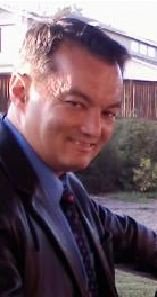 A car crashed into his business while he was out of town and his clients took care of it for him. That’s Ohana, something Conway created on purpose.
A car crashed into his business while he was out of town and his clients took care of it for him. That’s Ohana, something Conway created on purpose.
Scot Conway says what’s important is what he teaches people, not his resume. Since a lot of us want to know someone’s background and qualifications, here are some highlights from Conway’s resume.
Scot’s written 30 books, produced 30 audio programs, and he’s a speaker and trainer. He’s a lawyer, a real estate broker, and a Ph.D. According to IMDB, he’s been in a movie with George Clooney. Scot’s a martial arts master who has been training since 1971, has been in magazines, and taught at world conferences.
What matters to him is people and helping people live elevated, vivid lives as whole people living whole lives. The Ohana Way is one part of how he does that.
Love the show? Subscribe, rate, review, and share!
Join the Successful Thinker Community today:
